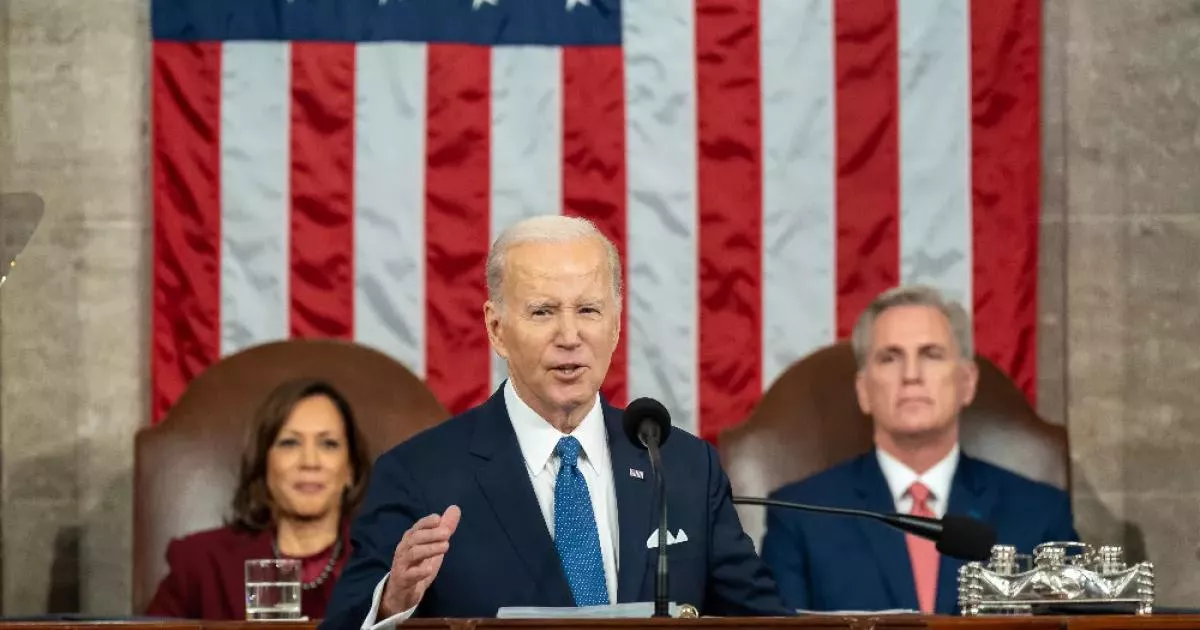The State of the Union Address is an annual message delivered by the President of the United States to Congress, typically at the start of the year. It provides a comprehensive overview of the nation's current state, encompassing economic conditions, budgetary matters, significant events, presidential priorities, legislative plans, and notable accomplishments.
1913: Woodrow Wilson Revitalizes In-Person State of the Union
In 1913, Woodrow Wilson, the 28th U.S. president, reinstated the practice of delivering the State of the Union address to Congress in person, aiming to garner support for his agenda. This marked a departure from the prior practice of submitting written reports, ushering in a new era of direct presidential communication with Congress.
1913: Resurgence of In-Person State of the Union Address
In 1913, despite initial controversy, Woodrow Wilson revived the practice of delivering the State of the Union address in person, breaking from Thomas Jefferson's preference for written messages. This decision solidified in-person delivery as the norm for subsequent presidents.
1922: Harding's Speech Marks Early Use of Radio Broadcasting
In 1922, Warren Harding's State of the Union address became the first to be broadcast on radio, albeit to a limited audience. This marked a significant step in expanding the reach of the address and leveraging new technology for presidential communication.
1923: Coolidge's Address Achieves Nationwide Radio Broadcast
Calvin Coolidge's 1923 State of the Union address became the first to be broadcast across the nation via radio, further expanding the audience and highlighting the growing importance of this medium in disseminating the president's message.
January 23, 1933: Twentieth Amendment Reshapes Congressional Schedule
On January 23, 1933, the ratification of the 20th Amendment significantly altered the Congressional calendar. The opening of Congress was shifted from early March to early January, which in turn affected the timing of the annual message.
1934: Shifting the State of the Union to Early in the Year
As a result of the 20th Amendment, the president's annual message, now commonly known as the "State of the Union" address, was delivered early in the calendar year beginning in 1934. This established a new tradition that continues today.
1934: Roosevelt Popularizes "State of the Union"
In 1934, Franklin D. Roosevelt used the phrase "State of the Union", leading to its widespread adoption and eventual replacement of the term "President's Annual Message to Congress." This linguistic shift reflected a change in how the address was perceived.
1934: Standardization of Annual State of the Union Delivery
In 1934, the practice of delivering the State of the Union address annually in late January or early February became the standard. This established a consistent timeframe for the president to report on the nation's condition to Congress.
1936: Roosevelt Experiments with Evening Delivery
President Roosevelt's 1936 address stands out as the first State of the Union delivered during the evening. While this did not immediately establish a new norm, it demonstrated a willingness to experiment with different delivery times.
1947: "State of the Union" Becomes the Accepted Name
By 1947, "State of the Union" had become the generally accepted name for the president's annual address to Congress, solidifying Roosevelt's influence on the terminology and further emphasizing the significance of the event.
1947: Truman's Address Ushers in the Television Era
In 1947, Harry S. Truman delivered the first State of the Union address to be broadcast on television, inaugurating a new era of visual communication and significantly broadening the potential audience for the president's message.
1953: Unique Transition of Power Involving Two State of the Union Messages
In 1953, a unique situation arose where Congress received both a written State of the Union message from the outgoing president and a separate State of the Union speech from the incoming president. This unusual circumstance highlighted the transition of power and the responsibility of reporting on the nation's affairs.
1961: Another Instance of Dual State of the Union Messages During Transition
Similar to 1953, the year 1961 witnessed a rare occurrence of both the outgoing and incoming presidents delivering State of the Union messages. Congress received a written message from the outgoing president and a separate speech from the incoming president, marking a distinctive moment in presidential transitions.
1966: Opposition Party Response Introduced
Beginning in 1966, a member of the opposing political party began providing a televised response or rebuttal to the president's State of the Union address.
1968: Unprecedented Television Coverage for Johnson's Address
Lyndon B. Johnson's 1968 State of the Union address marked the first time television networks in the United States provided unconstrained coverage, without any time limits. This allowed for extensive commentary and analysis following the address, indicating television's growing role in political discourse.
1970: Democrats Televise Response to Nixon
In 1970, the Democratic Party responded to President Nixon's State of the Union with a televised program, marking an evolution in how the opposition party engaged with the president's address.
1973: Democrats' Televised Response to Nixon's Written Speech
Continuing their practice from 1970, Democrats again presented a televised response to President Nixon's State of the Union in 1973, even though Nixon delivered his address in writing that year.
1975: Ford's Pessimistic Assessment
While President Gerald Ford used the phrase "The State of the Union is..." in his 1975 address, he diverged from later presidents by completing the sentence with "not good", reflecting the difficult economic and political climate of the time.
1981: Reagan Initiates New Tradition for Inaugural Addresses
In 1981, President Ronald Reagan established a new precedent for newly inaugurated presidents. He delivered an address to Congress in his first year but did not designate it as an official "State of the Union" address, separating inaugural addresses from the traditional annual message.
1981: Carter's Final Written Message Marks a Shift
Jimmy Carter's written State of the Union message in 1981, days before the end of his term, marked the last instance of a president exclusively using a written format. This signaled the end of an era and emphasized the growing preference for in-person delivery.
1981: Reagan's Approach to Inaugural Addresses Sets a Precedent
Since 1981, newly inaugurated presidents have opted not to officially designate their first speech before Congress as a "State of the Union" message. This practice acknowledges that the responsibility of reporting on the State of the Union formally lies with the president who held office during the preceding year. Ronald Reagan's approach in 1981 significantly influenced this tradition.
1982: Honoring Lenny Skutnik
In his 1982 address, President Reagan initiated the practice of recognizing everyday heroes during the State of the Union. He honored Lenny Skutnik for his heroism following the Air Florida Flight 90 crash, a practice that continues to this day.
1982: Democrats Respond to Reagan's Address
The Democratic Party continued the tradition of providing a televised response to the president's State of the Union address, doing so for President Reagan's 1982 speech.
1983: "Debate on the State of the Nation" in Spain
In 1983, the Congress of Deputies in Spain adopted a State of the Union-like tradition called the "Debate on the State of the Nation." This annual event involves an address by the Prime Minister followed by responses from various parliamentary groups.
1983: "The State of the Union is Strong"
President Ronald Reagan introduced the phrase "The State of the Union is strong" in his 1983 address, a phrase that has become a staple for presidents of both parties in nearly every year since then.
1985: Democrats Respond to Reagan's Address
Democrats again presented a televised response to President Reagan's State of the Union address in 1985.
January 28, 1986: Reagan's Address Postponed Due to Challenger Disaster
Ronald Reagan's 1986 State of the Union Address was the first to be postponed. The originally scheduled date of January 28, 1986, was delayed due to the Space Shuttle Challenger disaster that morning, prompting Reagan to address the nation from the Oval Office about the tragedy instead.
1997: Clinton Brings the State of the Union to the World Wide Web
Bill Clinton's 1997 State of the Union address became the first to be broadcast live on the World Wide Web, demonstrating the internet's emerging significance as a platform for communication and information dissemination. This broadened accessibility to the address on a global scale.
1997: Republicans Deliver Response to High School Students
Breaking from the tradition of studio broadcasts, the Republican Party delivered their response to President Clinton's State of the Union address in front of high school students in 1997.
1999: Clinton Delivers State of the Union Amidst Impeachment Trial
In 1999, Bill Clinton became the first president to deliver an in-person State of the Union address while facing an impeachment trial. The speech coincided with the day Clinton's defense team presented its opening statement in the trial, though Clinton refrained from mentioning the proceedings during his address.
2001: Designated Survivor and Rump Congress Implemented
Following the September 11 attacks, security measures for the State of the Union address were enhanced in 2001. A designated survivor from the cabinet was chosen to not attend, and certain members of Congress were relocated to undisclosed locations to form a rump Congress in case of a catastrophic event.
2003: Formalization of Designated Survivor Selection
Building on the security measures introduced in 2001, each chamber of Congress formally designated a separate survivor for the State of the Union address starting in 2003.
2004: First Spanish-Language Response
In 2004, New Mexico Governor Bill Richardson made history by delivering the Democratic Party's response to the State of the Union in Spanish, reflecting the growing importance of the Hispanic electorate.
2010: McDonnell Delivers Response from Virginia State Capitol
Virginia Governor Bob McDonnell delivered the Republican response to President Obama's State of the Union address from the House of Delegates chamber of the Virginia State Capitol in 2010, further diversifying the locations from which responses were delivered.
2011: Tea Party Express Delivers Response
In 2011, Minnesota Congresswoman Michele Bachmann provided a televised response to the State of the Union on behalf of the Tea Party Express, marking the first time a political movement outside the two major parties offered a formal response.
2011: Bipartisan Seating Proposal
In 2011, in response to the Tucson Shooting, Senator Mark Udall proposed that Republicans and Democrats sit together, rather than on opposite sides, during the State of the Union address. This proposal received considerable support but ultimately did not result in a significant change in seating arrangements.
2012: Continued Efforts for Bipartisan Seating
Continuing the efforts from the previous year, more than 160 lawmakers committed to bipartisan seating for the 2012 State of the Union address. However, these efforts ultimately did not last.
2016: Return to Traditional Seating
By the 2016 State of the Union, seating arrangements largely returned to the traditional partisan divide, despite earlier efforts towards bipartisan seating.
2016: Study Highlights Representation Dynamics in State of the Union Addresses
In 2016, a study illuminated the intricate dynamics of representation in American politics through an analysis of State of the Union addresses. This research delved into the intersection of gender and political allegiance, particularly the Democratic party's focus on women's interests. It also examined the use of color blindness rhetoric, emphasizing individuality over systemic racism, to appeal to a largely white population.
2017: Macron Initiates State of the Union in France
French President Emmanuel Macron delivered a State of the Union-style address in 2017, inspired by the American tradition.
2018: Macron's Second State of the Union
Macron delivered another State of the Union address in 2018. This did not become a recurring practice in France.
2018: Government Shutdown Leads to State of the Union Delay
The 2018-2019 United States federal government shutdown ultimately led to the postponement of Donald Trump's 2019 State of the Union address. This situation highlighted the impact of political disputes on presidential events and traditions.
January 23, 2019: Trump's Address Postponed Due to Government Shutdown
The 2019 State of the Union speech by Donald Trump, originally slated for January 29, was postponed on January 23, 2019. This followed a disagreement with House Speaker Nancy Pelosi regarding the government shutdown. Pelosi rescinded her invitation for Trump to deliver the address in the House chamber, marking a historically unprecedented event.
2019: Speaker Does Not Introduce President
In a break from tradition, the speaker of the house opted not to introduce the president before the State of the Union address in 2019.
2021: Cancellation Due to Pandemic
In 2021, the "Debate on the State of the Nation" was cancelled in Spain due to the COVID-19 pandemic, demonstrating the impact global events can have on long-standing traditions.
2024: Modern-Day Range of State of the Union Delivery Dates
By 2024, the date for delivering the State of the Union address had ranged from as early as January 3 to as late as March 7, demonstrating flexibility within the established timeframe for this annual presidential message.
2024: Biden Begins Speech Prematurely
In 2024, President Biden unintentionally began his State of the Union address before Speaker Mike Johnson could introduce him. Johnson, respecting the president, nodded and proceeded without an introduction.
2024: Republican and Independent Responses
In 2024, two unique responses to the State of the Union took place. Senator Katie Britt provided the official Republican response from her kitchen table on March 8 (International Women's Day). Additionally, Robert F. Kennedy Jr. delivered the first-ever Independent response.
Mentioned in this timeline
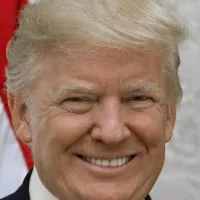
Donald John Trump is an American politician media personality and...

Nancy Pelosi is a prominent American politician notably serving as...
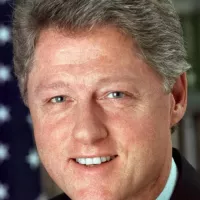
Bill Clinton the nd U S President - served as...

Robert F Kennedy Jr an American politician environmental lawyer author...
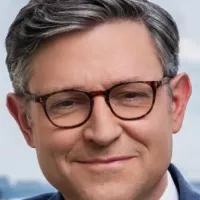
Mike Johnson is an American lawyer and politician currently serving...
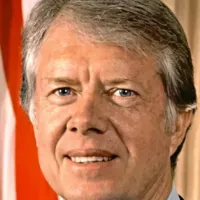
Jimmy Carter the th U S President - was a...
Trending

8 months ago Donovan Mitchell Starts Crucial Game 5 Despite Ankle Injury: Cavs Face Pacers

1 month ago Seth Fox, CBS News Producer and Video Editor, Remembered in Special Episode.

7 months ago Darius Garland Out 4-5 Months After Toe Surgery: Impact on Cavs Season

Robert Iger is an American media executive known for his leadership at The Walt Disney Company He held positions at...

5 months ago Mariah the Scientist to perform at Global Citizen Festival alongside The Weeknd and Shakira.
Carnival Cruise Line headquartered in Doral Florida is a prominent international cruise company As a subsidiary of Carnival Corporation plc...
Popular

Ben Shapiro is a prominent American conservative political commentator media...

XXXTentacion born Jahseh Dwayne Ricardo Onfroy was a controversial yet...

Candace Owens is an American conservative political commentator and author...

William Franklin Graham III commonly known as Franklin Graham is...

Tucker Carlson is an American conservative political commentator known for...
The Kennedy Center Honors are annual awards recognizing individuals and...
